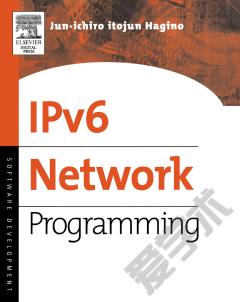IPv6 Core Protocols Implementation
IPv6 was introduced in 1994 and has been in development at the IETF for over 10 years. It has now reached the deployment stage. KAME, the de-facto open-source reference implementation of the IPv6 standards, played a significant role in the acceptance and the adoption of the IPv6 technology. The adoption of KAME by key companies in a wide spectrum of commercial products is a testimonial to the success of the KAME project, which concluded not long ago. This book is the first and the only one of its kind, which reveals all of the details of the KAME IPv6 protocol stack, explaining exactly what every line of code does and why it was designed that way. Through the dissection of both the code and its design, the authors illustrate how IPv6 and its related protocols have been interpreted and implemented from the specifications. This reference will demystify those ambiguous areas in the standards, which are open to interpretation and problematic in deployment, and presents solutions offered by KAME in dealing with these implementation challenges.Covering a snapshot version of KAME dated April 2003 based on FreeBSD 4.8Extensive line-by-line code listings with meticulous explanation of their rationale and use for the KAME snapshot implementation, which is generally applicable to most recent versions of the KAME IPv6 stack including those in recent releases of BSD variantsNumerous diagrams and illustrations help in visualizing the implementation In-depth discussion of the standards provides intrinsic understanding of the specifications
{{comment.content}}








 京公网安备 11010802027623号
京公网安备 11010802027623号